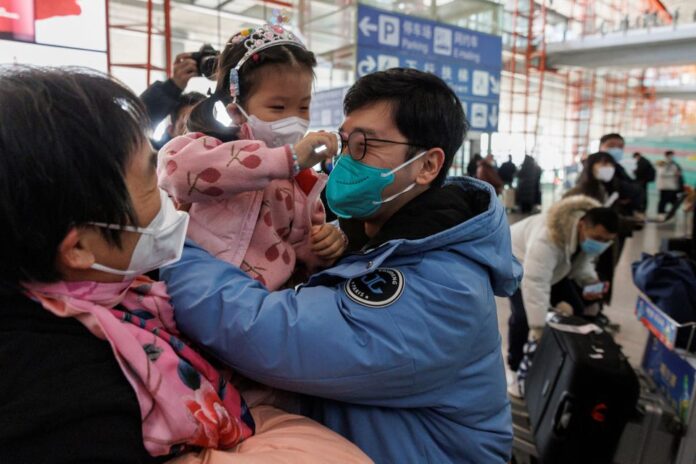HONG KONG (Reuters) Jan,13 – For the past three years, living under China’s strict COVID-19 restrictions has brought stress and uncertainty to Zhang Qi, who has had children in China.
When China abruptly lifted its ‘zero COVID’ regime last month to allow the virus to spread freely, the balance tipped toward a resounding ‘no’, said a Shanghai-based e-commerce executive.
The story of a mother and baby being deprived of medical attention as medical facilities were overwhelmed by COVID infections was the final straw for Chan.
When China releases its official 2022 population data on Jan. 17, we may get a glimpse of the scars the pandemic has left on China’s already bleak demographic outlook. Some demographers expect China’s population to decline for the first time since the 1961 global famine in 2022, undergoing profound changes with far-reaching implications for the global economy and order.
The number of newborns in 2022 is expected to fall below 10 million for him from her 10.6 million last year, and he is already down 11.5% from 2020 to a record low.
“With this historical turning point, China, for the first time in Chinese history and in world history, has entered a long-term, irreversible process of population decline,” said Wang Feng, a professor of sociology at the University of California.
China’s total population will increase by 480,000 her to 1,412.6 million in 2021. The United Nations predicts that China’s population will begin to decline this year as India overtakes China as the world’s most populous country. UN experts expect China’s population to fall by 109 million by 2050, more than triple the decline from previous projections in 2019.
While 9 out of the 10 most populous countries in the world are experiencing declining fertility rates, China will have the lowest fertility rate of 1.18 in 2022, well below the OECD population stability threshold of 2.1.
The country, which had a one-child policy from 1980 to 2015, officially said last year that it was on the brink of population decline when the National Health Commission said the population could decline by 2025.
In October, President Xi Jinping said the government would take further steps to boost the country’s birth rate.
The financial burden of children’s education, the world’s most stressful university entrance exams, and just 5.5% of children under 3 enrolled in kindergarten are well below the OECD average. YuWa Das shared the think tank Population Research earlier this month. The economic impact of an aging society is enormous.
Demographer Yi Fuxian expects the proportion of the population over the age of 65 to reach 37% by 2050, from 14% last year and 5% in 1980. . Due to declining birth rates, the labor force has not been replenished as much.
“Rapid population aging is slowing China’s economy, reducing revenues and increasing public debt, China is getting old before it gets rich.”
Ms Murphy, her 22-year-old student at Beijing Jiaotong University, said she could not afford to raise children because of the sluggish economy.






